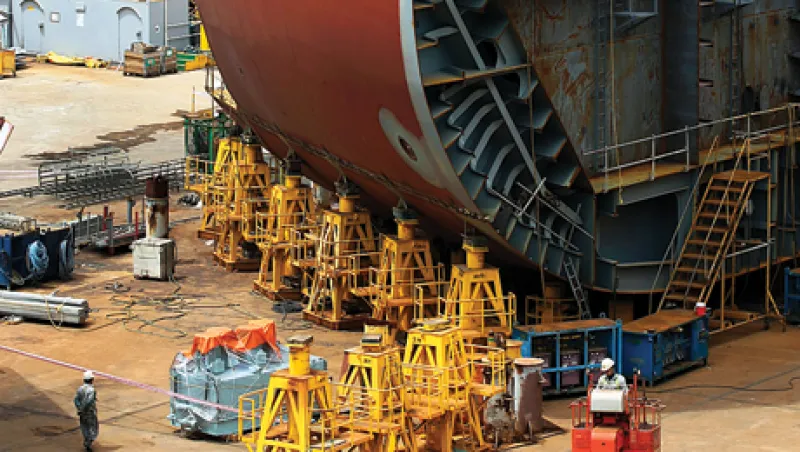ONCE CONSIDERED TOO MATURE TO COMPETE WITH go-go China and ignored by conservative funds as not quite ready for prime time, South Korea has become a hot destination for money managers seeking a sane angle on emerging-markets growth. “It’s a no-brainer,” says Kyle Shin, CIO of $1 billion Hong Kong hedge fund shop Gen2 Partners. “You really have to be there.” Shin, whose $107 million, multistrategy KS Asia Absolute Return Fund has yielded a 9.36 percent compound annualized return since it launched in January 2010, visited Seoul himself last month. Along with fellow hedge fund managers, pension funds and other institutional players from Asia and elsewhere, he attended Samsung Securities Co.’s Global Investors Conference in the South Korean capital.
“The world is dependent on Chinese economic growth, but if you can’t trust Chinese numbers, Korea is a reasonable proxy,” Shin says. “You’re still getting huge exposure to the Chinese economy, and companies are more liquid and much more transparent.”
Last year South Korea exported $140 billion worth of goods across the Yellow Sea to Beijing or south to Shanghai and the industrial heartland of Guangdong — twice as much as it did to the U.S. Taking a cue from their Japanese rivals, South Korean companies are cracking China’s vast consumer markets for everything from electronics to snack food. Whatever happens in Europe, and whatever mysteries lurk in Chinese balance sheets, those customers and that export story aren’t going away any time soon.
“Investors get very excited about the Chinese middle class and Southeast Asia, and Korea is in the best position to capture that growth,” says J. Michael Oh, San Francisco–based manager of Matthews International Capital Management’s $204 million Korea Fund, which takes a bottom-up approach to publicly traded South Korean equities. “You always have to be aware of North Korea and its irrational acts, but despite the occasional volatility, the money always comes back to the growth, the quality and the very reasonable prices.” Oh’s fund has returned an annualized 11.01 percent over the past decade. After plunging 19 percent last year, it was up 5 percent as of mid-May, versus 4 percent for the Korea Composite Stock Price Index.
With an aggregate price-earnings ratio of 9, South Korea still looks cheap compared with other mature Asian manufacturing markets and is roughly comparable to China. So far, most institutional interest in the country has been on the megacap side, where Samsung Group’s electronics division is king.
It’s hard to shake the perception that the rest of South Korea is a gigantic support network for Samsung Electronics Co., the nation’s biggest company, accounting for 14 percent of the $1 trillion Korea Exchange, compared with archrival Apple’s 3 percent of U.S. market capitalization. A magnet for foreign capital — through mid-May nearly 75 percent of the KRX’s $39 billion appreciation for the year came from this stock — Samsung Electronics still trades at a deep discount to Apple.
Money managers are more nervous about South Korea’s lesser conglomerates, or chaebol. The chaebol still rule the economy more than a decade after the currency crisis of the mid-1990s forced Seoul to dismember or nationalize Hyundai Group and others. Samsung, whose products range from ships to semiconductors to mutual funds, is an empire in itself, but its peers are getting hungry for credit. Fueled by commodity imports, inflation remains enemy No. 1 for the Bank of Korea, which recently trimmed its 2012 growth estimate for the country to 3.2 percent from 3.3 percent. With the seven-day repurchase rate frozen at a relatively high 3.25 percent, some investors worry that borrowers are already in distress.
By global standards, South Korean banks appear ironclad, with only 1.5 percent of corporate debt failing to perform in the fourth quarter of 2011. Even Woori Financial Group has wrestled its nonperforming-loan ratio below 2 percent. But paper-thin capital reserves and a flat yield curve don’t give much comfort. Investors also wonder if government-owned Woori — cobbled together after the currency crisis and, with $268 billion in assets, South Korea’s largest lender — will ever be able to return to the private sector.
“The major restructuring is finally almost over, but in the meantime the banking sector suffers from especially heavy government regulation in an already highly regulated country,” says Matthews’s Oh. “The regulation makes Korean balance sheets much more transparent than you’ll find elsewhere in emerging markets, but it can be perceived as a drag on performance.” • •






